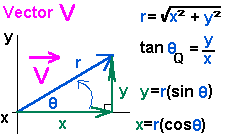www.cusatxpress.blogspot.com Exclusive
———————————————
|
|
Derivatives The derivative of:
 |
a CONSTANT is zero. |
|
|
|
 |
the PRODUCT OF A CONSTANT AND A FUNCTION
is |
|
|
|
 |
the PRODUCT OF TWO FUNCTIONS, a first and a second function,
is |
|
|
|
 |
the QUOTIENT OF TWO FUNCTIONS, a first divided by a second function,
is |
|
|
|
 |
a FUNCTION OF A FUNCTION, a major function and its argument function, an outer function and the inner function, is |
| Arithmetic Tricks, Rules & Shortcuts In Words & Symbols |
- Factor-Out A Constant

- Simplify Through Symmetry




- Switch the Limits and Get the Opposite

- Rewrite Using Zero As A Limit, If Possible


- Rewrite as A Sum By Seperating Terms


- Rewrite as A Sum By Using More Limits of Integration


The sine and cosine are closely related.
- One is the derivative or opposite of the derivative of the other.
- One is the antiderivative or the opposite of the antiderivative of the other.
| Take A Derivative or Antiderivative or Sine and Cosine |
- 1st: Place the symbol cosine on the horizontal
- as in the positive x axis
- (as in the cosine is the horizontal component of a vector),
- 2nd: Place the symbol sine on the vertical
- as in the positive y axis
- (as in the sine is the vertical component of a vector)
- 3rd: Place – sin(x) and – cos(x) in the appropriate spots.
- To Take a first or second or third or fourth … DERIVATIVE,
- move one or two or three or four … turns in a CLOCKWISE direction.
- To Take a first or second or third or fourth … ANTIDERIVATIVE,
- move one or two or three or four … turns in a COUNTER-CLOCKWISE direction.


| Take First, Second, Third Derivatives of Sine & Cosine Functions GRAPHICALLY |
Use the graphs to takes the derivatives. 
To take the first derivative, use a pencil. Use the middle point of a pencil as
a tangent point and point the pencil to the right, the greater x values.
Trace the curve, stating the derivative (slope of the tangent) as you do.
Use the stated derivatives (slopes) to describe the curve which is the
derivative functions.
For example, TAKE THE DERIVATIVE OF THE SINE.
- At zero the curve is increasing at a 45% angle so, the slope is 1.
- In the first quadrant, the function is increasing but at a slower rate, the slope is decreasing.
- At 90°, the curve reaches a relative max, the slope is 0.
- In the second quadrant, the function is still decreasing,
the derivative (slope) is negative. - At 180°, the function is at a -45° angle, the slope is -1.
- In the third quadrant, the curve continues to decrease, but
not as sharply, the slope is negative but increasing. - At 270°, the function reaches a relative min, and the slope is 0.
- In the third quadrant, the function increases, the derivative (slope) is positive.
- At 360°, the function still increasing, the slope is 1
and the cycle begins to repeat.
What’s the function?
The cosine.
The derivative of the sine is the cosine.
Second Derivative
Two methods for taking the second derivative, the slope of the derivative, are
suggested. EITHER repeat the above method using the cosine as the original function, OR,
use the movement of the pencil point and the sine function to compute the second derivative of the sine, d2[sin(x)]/dx2.
To integrate a function times the derivative of another function, use:

================================================ Imp Note: IF u have Any Doubt pls Don’t ask me.. i hate this subject…
